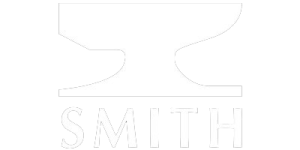

- 713.590.1312
- sale@pandbtools.com
2025 How to Choose the Best RFID Bluetooth Reader for Enhanced Inventory Management and Tracking Efficiency
In today's fast-paced retail environment, the integration of technology in inventory management has become imperative for businesses seeking to enhance operational efficiency and accuracy. Among the various tools available, the RFID Bluetooth reader stands out as a crucial asset for modern supply chain logistics. According to a report by Grand View Research, the global RFID market is projected to reach USD 40.6 billion by 2026, with a significant portion of this growth attributed to the adoption of RFID technologies in inventory management. This surge in demand underscores the necessity for companies to invest in state-of-the-art solutions that can streamline tracking processes and reduce human error.
The adoption of RFID Bluetooth readers offers not only a boost in tracking efficiency but also improved data collection capabilities. A study by the RFID Journal found that organizations implementing RFID technology can reduce inventory handling costs by up to 30% and improve inventory accuracy rates to over 99%. By leveraging real-time data and seamless connectivity, businesses can enhance their decision-making process regarding stock levels, replenishment strategies, and order fulfillment. Choosing the right RFID Bluetooth reader is therefore imperative for any organization aiming to maintain competitiveness in an ever-evolving market landscape. Ensuring that the selected device meets specific operational needs can lead to significant improvements in inventory management practices, ultimately driving better service levels and customer satisfaction.
Understanding RFID and Bluetooth Technology for Inventory Management
Understanding the implications of RFID and Bluetooth technology is essential for enhancing inventory management processes. Companies are increasingly turning to these technologies to boost tracking efficiency and reduce operational costs. For instance, the US inventory trackers market is projected to grow from approximately $1.7 billion in 2024 to an estimated $2.8 billion by 2029, reflecting a significant CAGR of 12.3%. This indicates a robust demand for advanced solutions that can streamline stock management practices, particularly in sectors like retail and logistics.
The integration of RFID and Bluetooth, especially with the advent of solutions like Qualcomm's latest processor, which combines RFID with advanced connectivity options, signifies a transformative step in inventory management. This processor not only enhances real-time tracking capabilities but also supports emerging IoT applications, facilitating a seamless data flow. Additionally, the AI-powered asset tracking system market is estimated to reach $15.6 billion by 2034, growing at a 20.6% CAGR. This growth emphasizes the pivotal role these technologies play in modernizing asset management strategies and meeting industry demands for better accuracy and efficiency.
Key Features to Look for in RFID Bluetooth Readers
When selecting an RFID Bluetooth reader for effective inventory management and tracking, it’s crucial to focus on key features that enhance performance and efficiency. One critical aspect is the integration of advanced connectivity options, such as passive Bluetooth, which allows for seamless communication between devices. The emergence of new passive IoT protocols has transformed the market, emphasizing the importance of flexibility and compatibility in RFID technology. As seen in market trends, the passive IoT domain—encompassing RFID, BLE, and eIoT—continues to dominate, making it essential for businesses to adopt readers that can adapt to various technologies.
In addition to connectivity, the processing power of RFID readers is a significant factor. Recent developments, like the introduction of enterprise processors with integrated RFID capabilities, have underscored the need for compact and efficient solutions. Such innovations not only minimize external module requirements but also lead to enhanced performance and decreased operational costs. Furthermore, businesses looking to improve their inventory management systems should prioritize readers that offer high read rates and long-range capabilities, essential for maintaining accuracy in tracking and managing assets effectively. Investing in the right RFID Bluetooth reader can lead to substantial improvements in operational efficiency and inventory visibility.
Comparing Performance: RFID vs. Bluetooth in Tracking Applications
In the realm of inventory management, the choice between RFID and Bluetooth technology plays a crucial role in tracking efficiency. RFID, or Radio Frequency Identification, excels in scenarios requiring rapid bulk scanning and real-time data collection. It can automatically track items without line-of-sight, allowing for significant time savings in operations. This feature is particularly advantageous for large warehouses or retail environments where numerous items must be monitored concurrently. The ability to read multiple tags simultaneously enhances overall productivity, making RFID a strong candidate for high-volume tracking applications.
On the other hand, Bluetooth technology offers distinct advantages, particularly in terms of cost-effectiveness and ease of integration with existing systems. Bluetooth-enabled devices are often less expensive and can facilitate close-range tracking, making them suitable for smaller operations or specific applications where precision is paramount. Additionally, with the increasing prevalence of smartphones and tablets equipped with Bluetooth, businesses can leverage these devices for employee-enabled tracking, creating a more versatile inventory management solution. Thus, the decision between RFID and Bluetooth ultimately hinges on the specific needs of the business, considering factors such as scale, budget, and the nature of inventory items being tracked.
Comparative Performance of RFID and Bluetooth in Inventory Tracking
Impact of Reader Range and Sensitivity on Inventory Efficiency
When selecting an RFID Bluetooth reader for inventory management, understanding the impact of reader range and sensitivity is crucial. A longer range allows for wider scanning capabilities, enabling businesses to read tags from a distance. This is particularly beneficial in large warehouses, where accessing items without physically moving can save significant time and labor costs. On the other hand, sensitivity determines how well a reader can detect tags that may be obscured or located in challenging environments, ensuring accurate inventory tracking.
**Tip:** When evaluating RFID readers, consider testing different models in your environment to identify the optimal range and sensitivity that fits your specific inventory conditions.
Moreover, incorporating a reader with adjustable sensitivity can enhance inventory efficiency. This feature allows users to tune the detection levels based on the surrounding conditions, from crowded stock areas to quieter spaces. With the right balance of range and sensitivity, businesses can streamline their inventory processes and reduce errors.
**Tip:** Look for readers that offer customizable settings to help you adapt to varying inventory loads and configurations for maximum tracking accuracy.
Selecting the Right Reader for Your Business Needs and Budget
When selecting the right RFID Bluetooth reader for your business, it's crucial to assess both your operational needs and budget constraints. Begin by understanding the specific requirements of your inventory management system. Consider the types of items you’ll be scanning, the volume of inventory, and the environments in which the reader will be used. For instance, a rugged reader might be necessary for warehouse or outdoor settings, whereas a more compact device could suffice for retail applications. Evaluating these factors early on will help narrow down the options that align with your business operations.
Budget is another critical element in the decision-making process. RFID Bluetooth readers come with a wide range of price points based on their features and capabilities. It’s essential to balance cost with functionality; investing in a more expensive reader with advanced features could lead to long-term savings through improved efficiency. Researching multiple vendors and seeking solutions that offer value beyond the initial purchase—such as customer support and warranty options—can also make a significant difference in ensuring your investment meets your business’s needs effectively.
2025 How to Choose the Best RFID Bluetooth Reader for Enhanced Inventory Management and Tracking Efficiency
| Feature | Description | Price Range | Ideal Use Case |
|---|---|---|---|
| Read Range | Up to 20 feet for high-performance models | $300 - $800 | Large warehouses, outdoor applications |
| Connectivity | Bluetooth, Wi-Fi, and USB connections | $200 - $600 | Mobility-focused operations |
| Battery Life | Up to 16 hours of continuous use | $150 - $500 | Retail and events |
| Durability | IP65 or higher rated for dust and water resistance | $250 - $700 | Industrial settings |
| Software Compatibility | Supports various inventory management systems | $100 - $400 | Flexible business needs |

